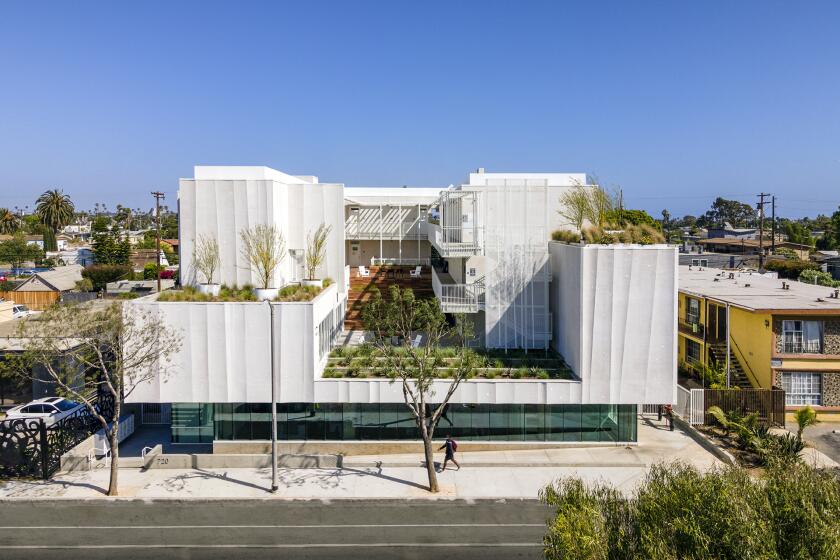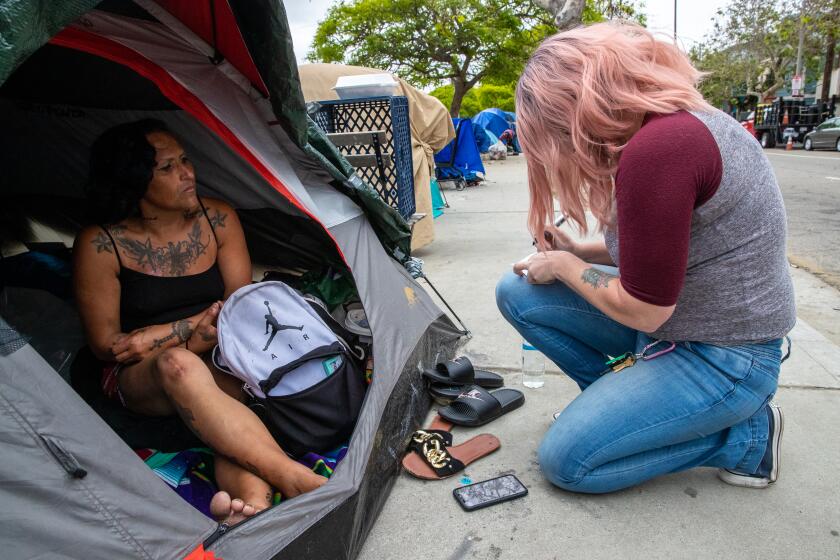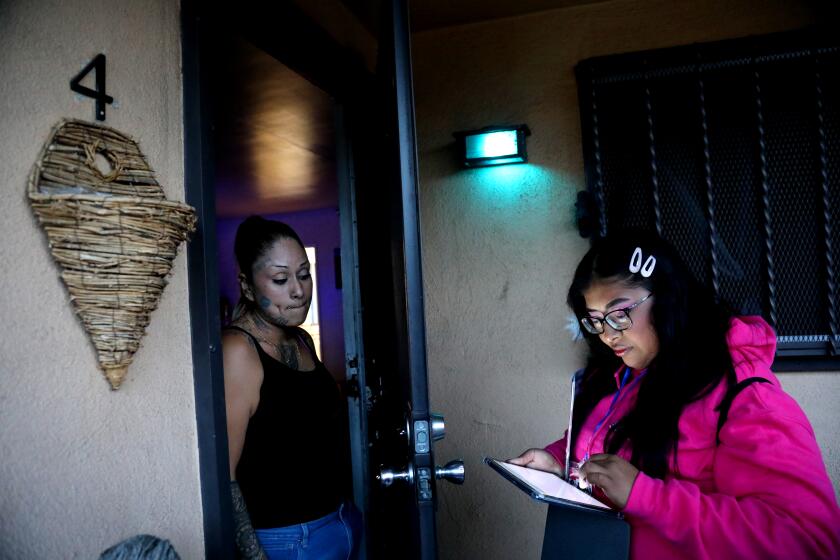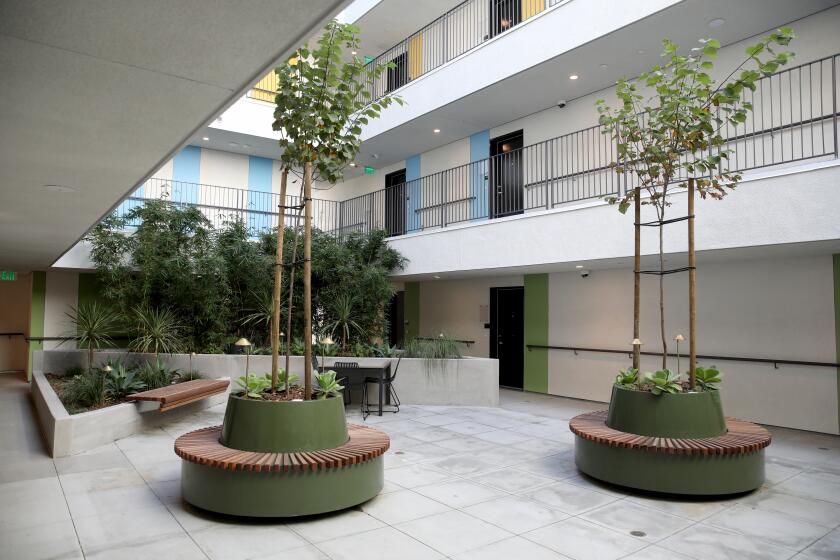Editorial: Lack of housing is pushing more seniors onto the streets. That’s on all of us
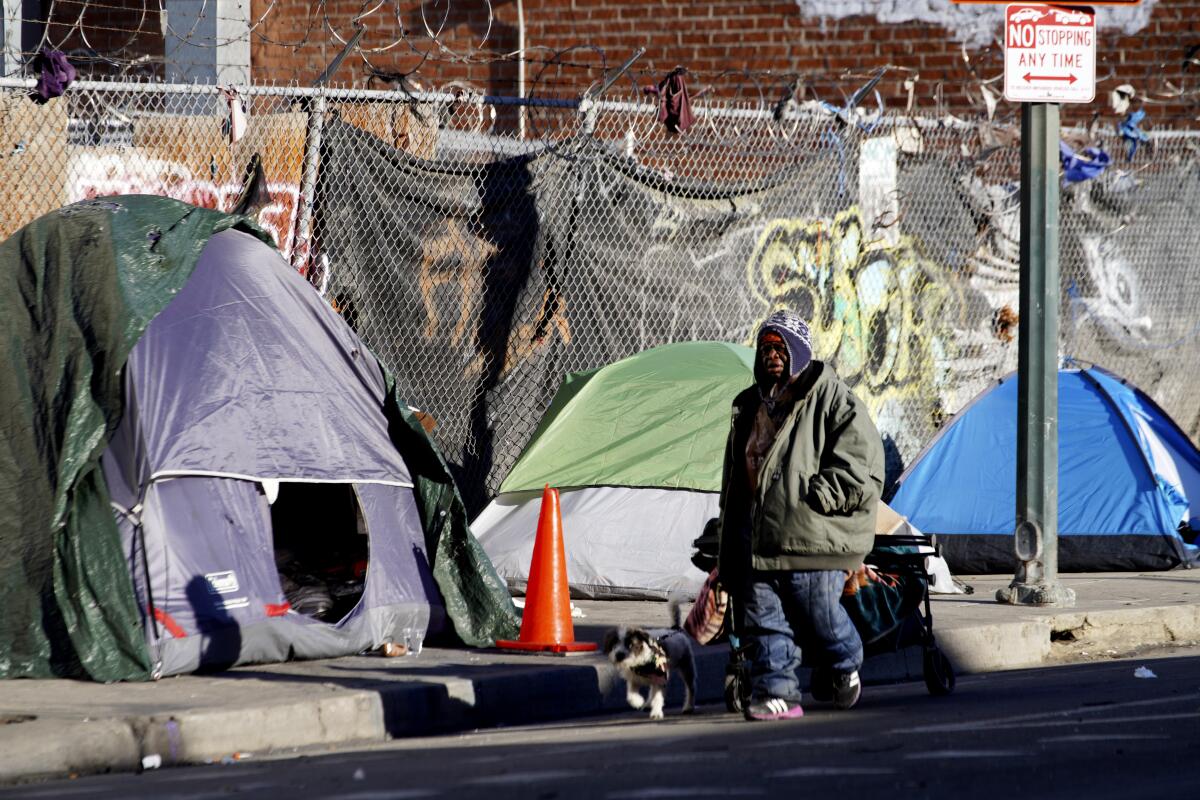
- Share via
All homelessness is troubling. But there is something particularly unsettling about older people — those age 50 and above — falling into homelessness after decades of lives filled with homes and jobs, faced with spending their last years on a sidewalk. Yet the numbers of older homeless people are rising across the country. The proportion of homeless people 65 and older in the U.S. is expected to triple between 2017 and 2030. Researchers believe the homeless population 55 and older in Los Angeles County will peak at 36,045 in 2025.
A new study, “Toward Dignity: Understanding Older Adult Homelessness” by the Benioff Homelessness and Housing Initiative at the University of California, San Francisco, took a deep look at the aging homeless population in California.
Overall, 48% of the population of single homeless adults in California is 50 or older, and 41% of those older adults first fell into homelessness after they reached 50. They live mostly unsheltered — in sidewalk encampments, abandoned buildings, vehicles, or anywhere they can use as a makeshift shelter. They are often in poor health and physically have aged beyond their years. “We’re talking about older frail adults. That is who is outside,” says Dr. Margot Kushel, the study’s principal investigator.
By excluding single-family zones from affordable housing incentive programs, L.A. leaders are squandering the potential to transform the city into one that works for people of all income levels.
This study gives us an idea of why these numbers have increased, but ultimately it should serve as a wake-up call to every Californian who plans to get old. If we don’t start building affordable housing at a significant clip, more people of all ages will lose their homes.
The report draws on information the researchers collected for the California Statewide Study of People Experiencing Homelessness published in 2023. Working with statisticians, researchers picked eight regions of California, including L.A. County, to capture a geographically and culturally diverse homeless population representative of the state.
The researchers interviewed 3,200 people from shelters and encampments over 13 months in 2021 and 2022, using suggestions from homeless and formerly homeless people on ways to ask questions that would elicit candid answers.
No more excuses for delaying the construction of Venice Dell homeless housing, Mayor Bass
So why are there more and more older homeless people?
The study authors conclude it’s at least partially a result of when they were born. Late baby boomers (born from 1955 to 1964) came of age during difficult economic times with lower wages, high unemployment and limited retirement opportunities. At the same time, federal support for affordable housing was waning and the social safety net was being dismantled.
Also, it was an age of mass incarceration, as a result of the punitive war on drugs, which particularly affected Black men. And Black people make up 31% of the older homeless population while they are only 6% of Californians 50 and older. These factors contributed to increase this cohort’s risks of homelessness, the study authors say.
Rental subsidies, eviction defense and help finding new housing are prevention efforts that could help vulnerable people from falling into homelessness.
Even having jobs didn’t protect this population, the study found. Most of those who became homeless at 50 or older had worked full-time before they became homeless, though many had worked in low-paying, physically taxing jobs and never achieved financial security. An illness, job loss, divorce or other setback often led to a lack of housing.
For them all, housing had been precarious to start with — 46% of older homeless people did not have a rental lease or own a home, and lived with family or friends. And here’s a scary piece of data for anyone not coupled: Being single is a risk factor. Among the older homeless people interviewed for the study, 52% had never been married. Another 27% were divorced or separated. Four percent were widowed. Only 17% were married or with a partner. Although it’s unclear how many of the study subjects got divorced, separated or widowed before homelessness, people brought up in the in-depth interviews how the lack of social support and the break-up of a marriage contributed to their homelessness.
If insurance costs don’t stabilize — or decrease — some affordable housing providers may have to cut services or sell buildings.
Once homeless, it’s difficult to get housing. The study estimates that California has only 24 units of housing for every 100 extremely low- income individual “resulting in a shortage of nearly 1,000,000 units of affordable housing.”
What can fix this? Not surprisingly, the solutions for older homeless people are the same as for all homeless people: Building more affordable housing, including subsidized units and ones with supportive services for people who need them. They also need prevention services — rental subsidies in particular. Many people in the study said a monthly subsidy of between $300 and $500 would have staved off homelessness.
But the study also validated the need for outreach to people on the brink of homelessness. Few of the people in the study said they looked for help before they lost their housing, though most regularly saw healthcare providers. It would help if healthcare providers had more information for older patients about services they could access.
The information gathered by this study just underscores what we already know: Local and state leaders need to act with urgency to get more permanent housing built. Older homeless people in bad health and unable to work are running out of time.
More to Read
A cure for the common opinion
Get thought-provoking perspectives with our weekly newsletter.
You may occasionally receive promotional content from the Los Angeles Times.
